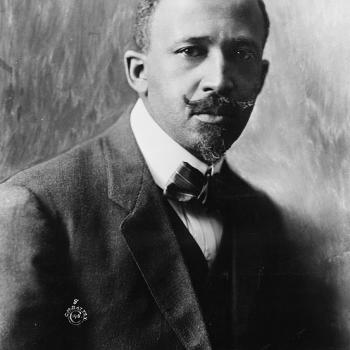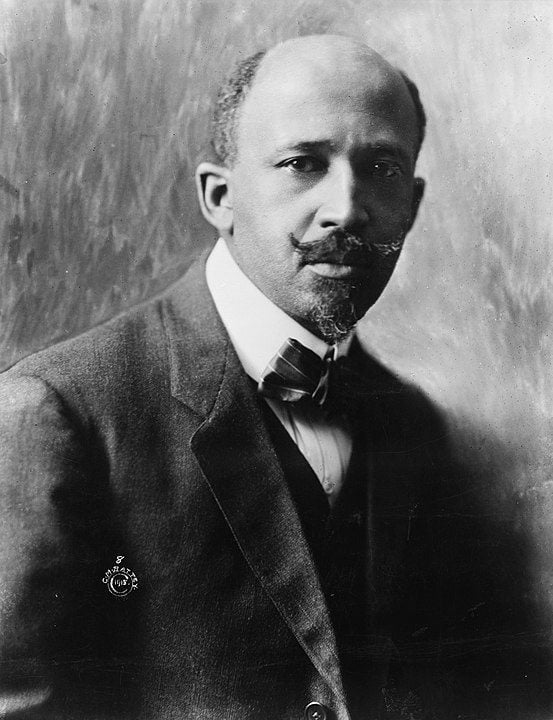I wanted to give all of you readers, who have brought this blog to such heights, a Christmas present. I could have ordered you something online, but there are thousands of you and my budget is already strained after buying presents for my numerous grandchildren. Also, I don’t know your size.
So, since blogs are part of our new information technology, I am giving you information by means of that technology, information that you probably will not know about otherwise, which will give you substantial, significant pleasure and satisfaction throughout the year.
These gifts are (1) works of art–which is what highly comical cartoons are–from a new website; (2) a highly comical television show that you can stream for free; (3) a highly non-comical forgotten literary masterpiece that you can download for $0.00.
I wrap them in explanations.
Gary Larson’s “The Far Side” Is Back, but Online
Everyone who remembers Gary Larson’s zany, faintly-disturbing universe has favorite “Far Side” cartoons. I think of the one showing the blessed dead going up an escalator to Heaven as an angel hands them a harp, while a devil hands those going down to the other place an accordion. Also the one about the farm that raises boneless chickens.
Larson’s cartoons were on the comics pages of newspapers across the country between 1980 and 1995, when he retired. But now, as of last week, the 69-year-old humorist and artist is back. Not to newspapers–many of which have shut down–but to the internet, which, Larson says, now has the capacity of rendering high-quality visual images that can faithfully reproduce his drawings. On his new website, The Far Side, you can see some of his hilarious collections, take a look at his sketchbooks in which he has developed his ideas, and buy his books. It also has a feature known as the “Daily Dose,” which gives you a fresh cartoon every day, like we had when newspapers existed. These so far are taken from his 15-year body of work. But, what I am really excited about, in 2020, he will include new stuff!
Read this story about Larson and his comeback. To access your present, go here. Then bookmark the site and make it part of your daily internet regimen, along with the Cranach blog, of course.
Oh, and Gary Larson is listed as a Famous Lutheran, whatever that means.
Corner Gas, the Free Streamable Small Town Comedy
Some relatives put us onto Corner Gas, a half-hour Canadian comedy that we now watch at the end of our TV binges of British murder mysteries, historical dramas, and other heavy stuff, a way to cleanse our palates with something light and hilarious to put us in a good mood before going to bed.
Think Seinfeld, except instead of New York City, it’s set in fictional town of Dog River, Saskatchewan, population 500, on the flat empty prairie, as they say, 40 kilometers from nowhere. The main characters are the comic-book loving Brent, who runs the corner gas station; his elderly parents, the cantankerous Oscar and the formidable Emma; his employee, the over-educated Wanda; his goofball friend Hank; Lacey, who moved in from Toronto after inheriting the local diner; and the local police force, Davis and Karen, who don’t have much to do, since there is hardly any crime in Dog River.
Hilarity ensues. For example, there was the one about Lacey trying to bring the local food movement to Dog River through her diner. The customers were outraged, insisting that they wanted food made in a factory. She offers a chili special, featuring local, grass-fed beef. Whereupon everyone realizes that the beloved local cow isn’t there anymore. No one wants to eat the cow (I forget her name), except for Oscar ,who felt the cow had insulted him, so he eats all the chili he can to get revenge. Also, the cow, in the field just outside of town, had been a landmark for truck drivers, who learned to turn left at the cow to get to Dog River. Now the outside world can’t find the place.
Then there was the Christmas episode, in which Brent’s his parents threw out the shiny aluminum Christmas tree and got a real one. But Brent gets upset because he wants a “traditional Christmas.” “We had that artificial tree since 1974!” His mother gives him a taste of her homemade cranberry sauce, and that also sets him off. “Cranberry sauce is supposed to come out of a can! With a big plop!” This crystallized for me something that I had observed in the worship controversies, that for lots of young adults, contemporary worship styles is all they have ever been exposed to. Contemporary worship is their traditional worship. And when they experience liturgical worship, they are excited because it feels brand new!
Not that Corner Gas usually takes on religious themes. The closest it came was when Lacey tried to start a Pilates class, but no one would come because it was named after the man who killed Jesus. But there is hardly anything objectionable. The satire is gentle, the stories stay away from sex (except for an occasional mild innuendo), and there is little bad language (except for Oscar calling everybody “Jackass!”).
The series isn’t really making fun of small town rural life, as if city life were any better. It isn’t condescending or mocking. Rural small towns are celebrated, in a way. The key to the show is the theme song, which has these lines:
You think there’s not a lot going on.
Look closer, baby, you’re so wrong.
That’s why you can stay so long,
Where there’s not a lot going on.
I’m learning this every day where we now live, in small town Oklahoma. There is just as much human drama here as anywhere else. “Look closer.”
The other good thing about Corner Gas in the new era of streaming on-demand-TV is that it’s nearly inexhaustible. The show, which ran from 2004 to 2009, has 107 episodes! You can’t just binge-watch it in an evening and it’s over. You can watch as much as you want, and there is always more! After watching those 107 episodes, there is also now an animated version–which is even edgier (the locavore episode I told you about is from the animated show)–that is still going on! There is also a movie!
The show was extremely popular in Canada. There were some U.S. showings on WGN and Comedy Central, and yet I had never heard of it. Today you can watch it for free on Prime Video via the free streaming service IMBd TV. (On a smart TV, if you have Amazon Prime, go to that app, then search for Corner Gas. It will take you to the episodes on IMBd, which are shown with a few commercials. If you don’t have Prime, I think that you can still get the IMBd app.)
Night-Thoughts and the Literature of Christian Melancholy
Lest you think those first two gifts are too frivolous, too humorous for these depressing times and your gloomy mood, my final present will strike a different chord. It’s a book–which you can get for free–that has been hailed as a literary masterpiece, which does something you almost never see today: delving into the depths of melancholy and finding the Christian faith.
In the course of just a few years, Edward Young (1683-1765) lost his wife, his daughter, and his son-in-law. After his wife’s death, Young was overwhelmed with sorrow. And, among his other torments, he couldn’t sleep. He began writing a series of poems about the night in which he explored the darkness not only in the world but in his heart.
Night-Thoughts, published between 1742 and 1745, are meditations on death, life, love, suffering, time, injustice, society, nature, the soul. And God. Young plunged into the depths of darkness, but he was a Christian. Strangely, by what we are used to, his suffering and the suffering he chronicles in the world do not make him question God’s existence; nor is he writing a Job-like lament, asking God why He is doing all of this to him. All of this darkness does not cause him to doubt God. Rather, it causes him to doubt the world.
Yes, your dreams are going to be dashed. Yes, the ones you love will die. Everything changes. Life is beautiful, but it doesn’t last. The world will disappoint you. But this is because this world is not your home. You cannot be satisfied here because your soul is immortal. The only light in the darkness is the light of Christ. I suspect that one of the imaginative sources for C. S. Lewis’s Great Divorce was Young–whose work Lewis certainly would have known–when he wrote,
All, all on earth, is shadow, all beyond
Is substance; the reverse is Folly’s creed:
How solid all, where change shall be no more! (Night I, lines 20-22)
But none of this is just an intellectual exercise. Young’s poem is known for its evocative descriptions and melancholy musings. But it is also known for its passages of rapturous communion with God.
This is a daunting poem, especially for modern readers. It is long, consisting of some 10,000 of lines of blank verse (unrhymed iambic pentameter), divided into nine separate “nights.” The language is elevated. The poem employs personifications of abstract qualities (such as night coming from her ebon throne), pseudo-classical names for actual people (such as the “infidel” Lorenzo, based apparently on his wastrel son), and a high-flown rhetoric that often seems over the top to those of us in this informal age. The poem is uneven, with passages of tedium relieved by utter brilliance.
Young’s style is basically that of Milton, whom he is constantly referencing (“fast by the throne of God”). The effect on Milton fans like me is to be reminded of the subject of “Paradise Lost”–the Fall–on Young’s every page. But instead of writing epic verse about great events, such as Biblical history, Young is pioneering the “subjective epic,” writing epic verse about a journey into himself and the combat of the soul.
As alien as Young’s poem seems today, it was enormously popular and enormously influential in both the 1700s and the 1800s. Enlightenment-era rationalists and neo-classicists loved it, having a big impact on Sir Edmund Burke and with Samuel Johnson’s biographer James Boswell calling Night-Thoughts “the grandest and richest poetry that human genius has ever produced.” But the Romantics of the next century, who you would think would have a quite different sensibility, also loved it greatly. It was especially influential in Germany, especially with Goethe. And it was an important book for J. G. Hamann, whom I’m studying right now.
And yet today, Night-Thoughts has been virtually–if not completely–forgotten. I have a Ph.D. in English literature and I had never read it, except for some brief excerpts in an 18th century class. It has taken my work on Hamann to make me seek it out. And just as he has perspectives that can help us post-moderns recover Christianity, the same might be said of Young. Our approach to suffering is to medicalize it, seeing melancholy feelings a disease we need to cure or a pain that we need to find a remedy for. (“Stop feeling like that!” “Cheer up!”) And as we have blogged about, some people today are saying that any kind of suffering makes life not worth living. Our recent ancestors would find that attitude absurd, if not contemptible. My impression, not just based on Edward Young but on many other writers from earlier times, is that people back then–who, as a whole, probably suffered more than we do–did not flee from their sorrow, but rather drank it to the dregs, often learning something from the process.
At any rate, Night-Thoughts is available as a Kindle download at Amazon for free. Go here. You can also read it online here.
Feel free to regift these presents to your friends and family. If you don’t like them, you can exchange them for other free websites, streaming videos, and e-books. But these may give you jolts of pleasure and satisfaction all through the year and beyond. They may be some of the best presents you are going to get!
So, Merry Christmas, everybody!
Image by monicore from Pixabay



















